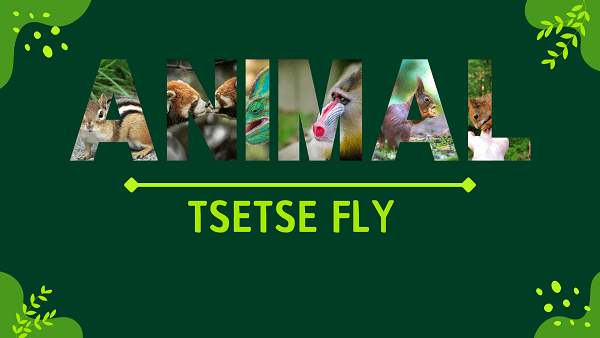Tsetse Fly | Facts, Diet, Habitat & Pictures
Home » Animals » Tsetse Fly | Facts, Diet, Habitat & Pictures
Tsetse Fly Overview
Appearance
The tsetse fly is a distinctive insect characterized by its medium to large size, typically measuring between 8 to 17 millimeters in length. It has a robust body with a dark brown to black coloration and large, iridescent wings.
Tsetse flies are easily recognizable by their unique, prominent proboscis, which extends forward from the head and is used for feeding on the blood of mammals. They have large, complex eyes that give them excellent vision, and their antennae are equipped with sensory structures.
Origins And Evolution
The tsetse fly’s evolutionary history dates back millions of years, with origins likely in the African continent. They are part of the Glossinidae family, a group of blood-feeding flies. Fossil evidence suggests that their ancestors evolved from non-blood-feeding flies, gradually developing adaptations for parasitic feeding.
Over time, tsetse flies specialized in feeding on the blood of mammals, becoming vectors for diseases like African trypanosomiasis (sleeping sickness). Their evolution was intertwined with that of their host animals, especially large mammals in Africa.
Tsetse flies have been a persistent presence in African ecosystems, evolving mechanisms to evade host defenses and evolving in response to changing environmental conditions. They remain a significant ecological and health concern today.
Behavior and Lifestyle
Their parasitic behavior and play a crucial role as vectors of disease in African ecosystems. They are blood-feeding insects, primarily feeding on the blood of mammals, including humans and animals.
Their behavior is typically crepuscular, being most active during dawn and dusk. Tsetse flies are highly sensitive to movement and are attracted to their hosts by factors like body heat, odor, and carbon dioxide emissions. After feeding, they rest and digest their blood meal, with some species mating shortly afterward.
Tsetse Fly Scientific Classification
- Kingdom: Animalia
- Phylum: Arthropoda
- Class: Insecta
- Order: Diptera
- Family: Glossinidae
Tsetse fly Locations
- West Africa
- Central Africa
- East Africa
- Southern Africa
- Parts of North Africa (limited distribution)
Fast Facts
- Name: Tsetse Fly
- Scientific Name: Glossina spp.
- Habitat: African savannas
- Diet: Blood-feeding insect
- Physical Features: Large, winged
- Nocturnal: Daytime feeder
- Solitary: Often solitary
- Unique Order: Diptera, Hippoboscidae
- Lifespan: 4-30 days
- Conservation Status: Not applicable
- Fun Facts: Transmit diseases
Physical Characteristics
- Color: Dark Brown
- Skin Type: Exoskeleton-covered
- Top Speed: Slow flyer
- Lifespan: Short-lived insect
- Weight: Lightweight body
- Length: Small size
- Age of Sexual Maturity: Rapid development
- Age of Weaning: Not applicable
Tsetse fly FAQs
What is a tsetse fly?
A tsetse fly is a blood-feeding insect found in sub-Saharan Africa, known for transmitting diseases like African trypanosomiasis (sleeping sickness).
Why are tsetse flies considered a health concern?
Tsetse flies are vectors for trypanosomes, which cause sleeping sickness in humans and nagana in livestock, posing significant health risks to both.
How do tsetse flies feed?
Tsetse flies have a proboscis through which they feed on the blood of mammals, including humans.
What is the lifespan of a tsetse fly?
The lifespan of a tsetse fly varies but generally ranges from a few weeks to a few months.
Do tsetse flies have any natural predators?
Some birds, bats, and insects, like certain wasps, prey on tsetse flies.


